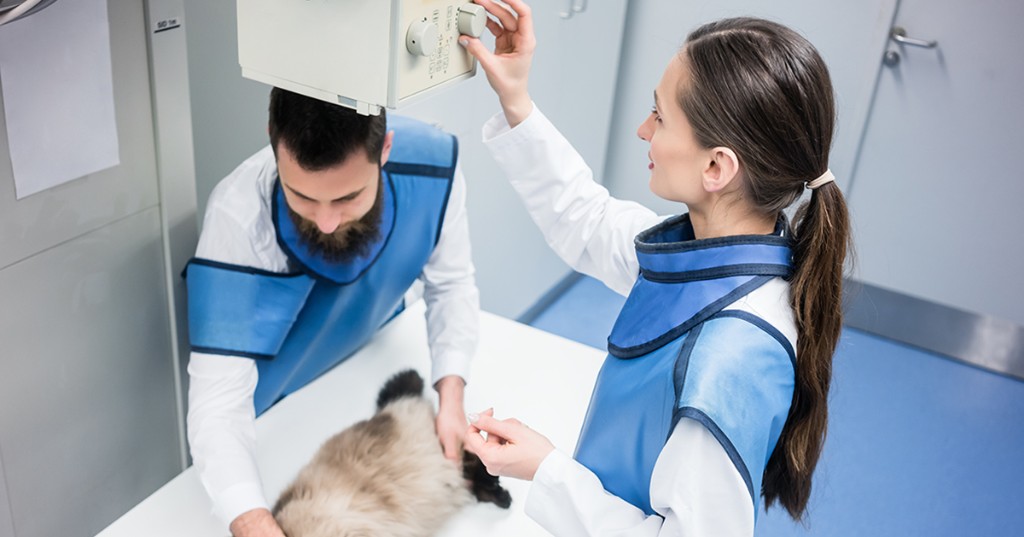Lowering radiation exposure in your veterinary...
Radiography is vital to the best practice of veterinary medicine because it enables the understanding and diagnosis of—and informs the treatment of—a variety of health issues. Accompanying these benefits, however, are risk factors associated with radiation exposure, which every veterinary professional should take seriously.

Veterinary technicians are at high risk for radiation exposure because they often need to hold animals during imaging procedures. When they are working with particularly uncooperative patients, veterinary technicians are in danger of exposing themselves directly to ionizing radiation, which can be harmful to their health both now and in the future.
Veterinary technicians can control and limit their exposure to penetrating radiation by taking advantage of time, distance, and shielding.
Reduce Time: By reducing the time of exposure to a radiation source, the dose to the worker is reduced in direct proportion with that time. Time directly influences the dose received: if you minimize the time spent near the source, the dose received is minimized. For example, if possible, interview a nuclear medicine patient before drug administration not after.
Increase distance: When appropriate, increase the distance between you and the radiation source (e.g., sealed source, x-ray tube). The exposure rate from a radiation source drops off by the inverse of the distance squared. For example, if a problem arises during a fluoroscopy procedure, stand on the image intensifier side of the C-arm if possible, or, when not assisting, step away from the patient if feasible.
Use shielding: The third exposure control is based on the proper radiation shields, automatic interlock devices, and in-place radiation monitoring instruments. Except for temporary or portable shields, protective drapes, lead or lead equivalent aprons, this type of control is usually built into the particular facility, such as concrete walls next to a radiation oncology accelerator. For portable x-ray devices, follow the vendor instructions.(Vet X-Ray Radiation Protective Apron)
Attitudes: Commit to a safety first policy in your practice.
Technician practicing x-ray safetyPerhaps the most important component x-ray safety is fostering a work environment in which staff safety is a priority. The recommended attitude towards radiation exposure in veterinary workplaces is to keep staff exposure to radiation As Low As Reasonably Achievable, known by the mnemonic ALARA. When performing an x-ray procedure, each team member should strive to keep radiation exposure levels ALARA by applying the principles of minimizing Time, maximizing Distance, and utilizing Shielding.
Consider lower-dose digital imaging:
One way to reduce radiation exposure is to replace older, film-based X-ray equipment with a digital radiography system. Compared to conventional X-ray equipment, digital imaging provides sharper, higher-resolution images with less radiation exposure.
Digital radiography isn’t new, but it has advanced considerably in recent years. Manufacturers are working to lower the radiation dose veterinary professionals and patients receive through solutions such as new lower-dose veterinary radiography systems. These systems enable low-dose radiation image capture without sacrificing clear, high-quality images. (Veterinary X-ray machine)
The pressures of busy practice life can create an environment where we forget to prioritize our own safety during these procedures. Bearing in mind the triad of radiation safety principles, Time, Distance, and Shielding, and committing to an Attitude where personnel safety comes first, are important steps to ensure a healthy practice environment for all.